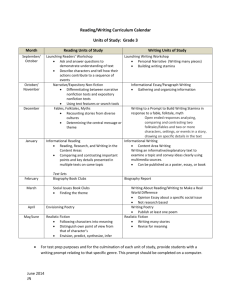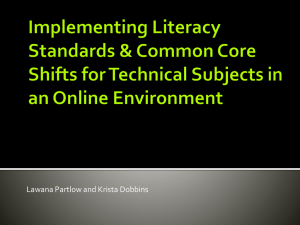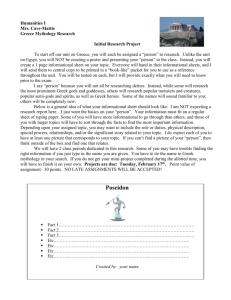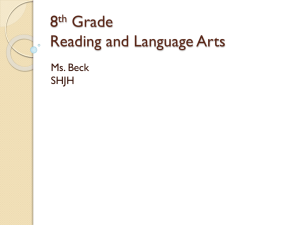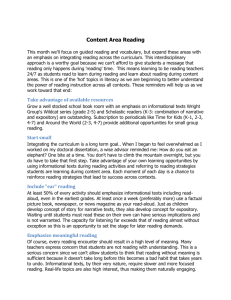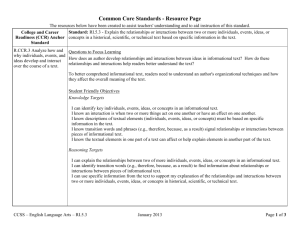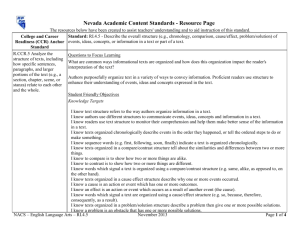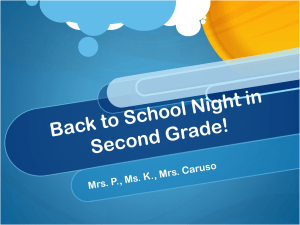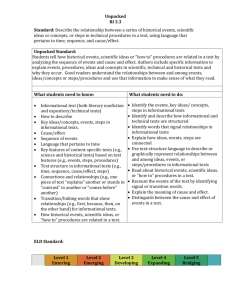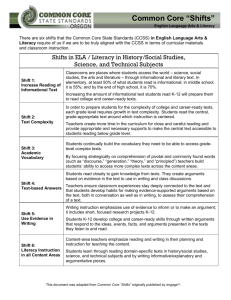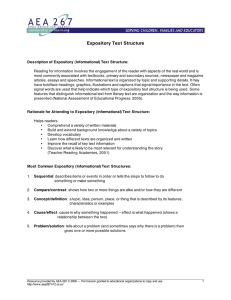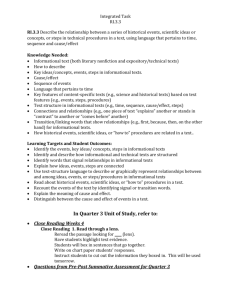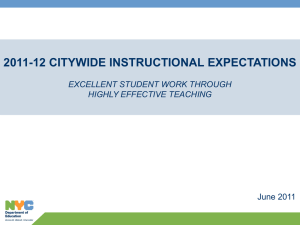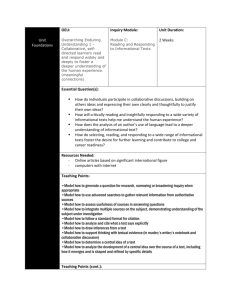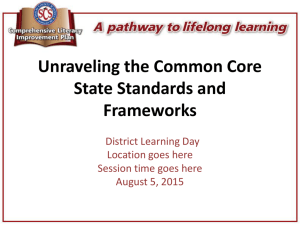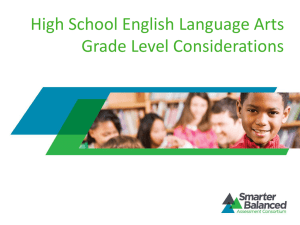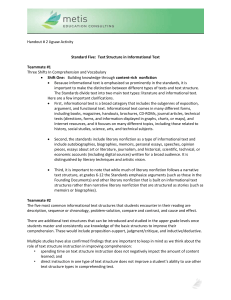RI.3.3
advertisement
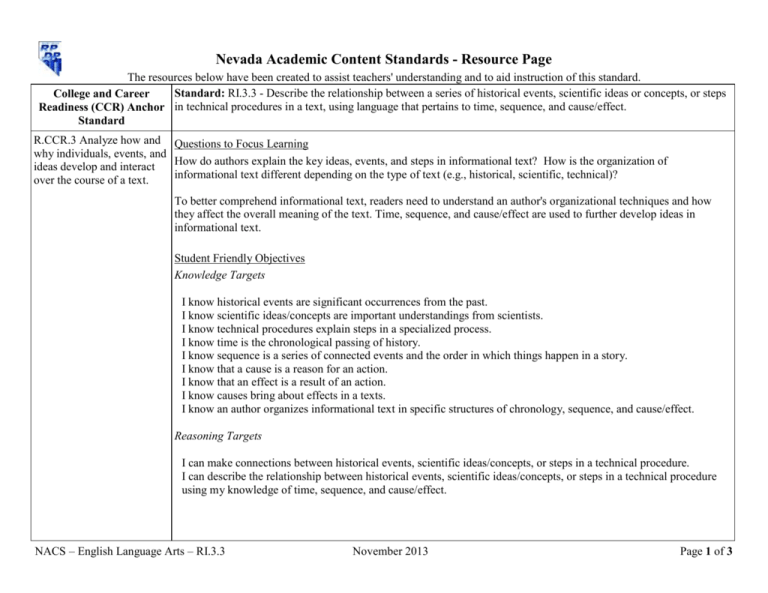
Nevada Academic Content Standards - Resource Page The resources below have been created to assist teachers' understanding and to aid instruction of this standard. Standard: RI.3.3 - Describe the relationship between a series of historical events, scientific ideas or concepts, or steps College and Career Readiness (CCR) Anchor in technical procedures in a text, using language that pertains to time, sequence, and cause/effect. Standard R.CCR.3 Analyze how and Questions to Focus Learning why individuals, events, and How do authors explain the key ideas, events, and steps in informational text? How is the organization of ideas develop and interact informational text different depending on the type of text (e.g., historical, scientific, technical)? over the course of a text. To better comprehend informational text, readers need to understand an author's organizational techniques and how they affect the overall meaning of the text. Time, sequence, and cause/effect are used to further develop ideas in informational text. Student Friendly Objectives Knowledge Targets I know historical events are significant occurrences from the past. I know scientific ideas/concepts are important understandings from scientists. I know technical procedures explain steps in a specialized process. I know time is the chronological passing of history. I know sequence is a series of connected events and the order in which things happen in a story. I know that a cause is a reason for an action. I know that an effect is a result of an action. I know causes bring about effects in a texts. I know an author organizes informational text in specific structures of chronology, sequence, and cause/effect. Reasoning Targets I can make connections between historical events, scientific ideas/concepts, or steps in a technical procedure. I can describe the relationship between historical events, scientific ideas/concepts, or steps in a technical procedure using my knowledge of time, sequence, and cause/effect. NACS – English Language Arts – RI.3.3 November 2013 Page 1 of 3 Vocabulary cause effect historical event scientific idea/concept sequence time technical procedure Teacher Tips Developing Reading Skills - This article, Helping Students Develop Strong Content Area Reading Skills, focuses on reading within content area courses and reflects both the concepts and ideas important to these subjects, as well as the text structures used by those practicing in this field. This article provides tips to help students develop strong content area reading strategies. Exploring Cause and Effect - Expository texts are a key component of literacy but often do not get introduced to students until the later grades. This lesson helps 3rd-5th grade students explore the nature and structure of expository texts that focus on cause and effect. Vertical Progression RI.K.3 - With prompting and support, describe the connection between two individuals, events, ideas, or pieces of information in a text. RI.1.3 - Describe the connection between two individuals, events, ideas, or pieces of information in a text. RI.2.3 - Describe the connection between a series of historical events, scientific ideas or concepts, or steps in technical procedures in a text. RI.4.3 - Explain events, procedures, ideas, or concepts in a historical, scientific, or technical text, including what happened and why, based on specific information in the text. RI.5.3 - Explain the relationships or interactions between two or more individuals, events, ideas, or concepts in a historical, scientific, or technical text based on specific information in the text. RI.6.3 - Analyze in detail how a key individual, event, or idea is introduced, illustrated, and elaborated in a text (e.g., through examples or anecdotes). RI.7.3 - Analyze the interactions between individuals, events, and ideas in a text (e.g., how ideas influence individuals or events, or how individuals influence ideas or events). RI.8.3 - Analyze how a text makes connections among and distinctions between individuals, ideas, or events (e.g., through comparisons, analogies, or categories). NACS – English Language Arts – RI.3.3 November 2013 Page 2 of 3 RI.9-10.3 - Analyze how the author unfolds an analysis or series of ideas or events, including the order in which the points are made, how they are introduced and developed, and the connections that are drawn between them. RI.11-12.3 - Analyze a complex set of ideas or sequence of events and explain how specific individuals, ideas, or events interact and develop over the course of the text. The above information and more can be accessed for free on the Wiki-Teacher website. Direct link for this standard: RI.3.3 NACS – English Language Arts – RI.3.3 November 2013 Page 3 of 3

